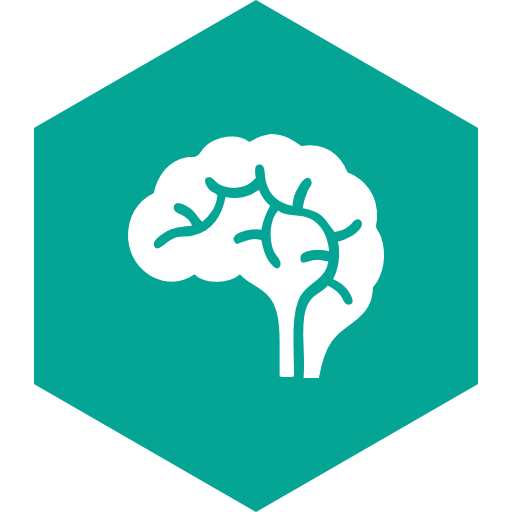Dimensions of
AI Literacies
AI literacies are becoming increasingly essential as AI continues to evolve and integrate into a multitude of educational contexts. Rather than viewing literacy as a singular skill, the Dimensions of AI Literacies embrace a pluralistic perspective, recognizing that individuals can develop and apply a range of interconnected competencies. AI literacies encompass the skills needed to comprehend, utilize, and critically evaluate AI within complex environments. As educators, learners, and leaders engage with AI, they must navigate both the technical aspects of AI tools and the ethical, cultural, and social implications of their use. AI literacies enable individuals to make informed decisions, adapt AI tools to different contexts, and ensure that applications of AI in academic settings are ethical and inclusive.
The Dimensions of AI Literacies (presented below) offer a flexible and transformative lens for understanding teaching and learning practices in an AI-enabled world. We invite you to explore this taxonomy to reflect on the challenges and opportunities presented by AI in education, leveraging a common vocabulary to identify and share effective practices for meaningfully implementing AI-supported approaches into the classroom.


What are the benefits of viewing AI literacies in education through a pluralistic lens?
The Dimensions of AI Literacies were developed to address the growing need for educators, learners, and leaders to navigate the complexities of AI in education. Remixed from the work of Doug Belshaw’s Essential Elements of Digital Literacies, this approach recognizes that AI literacies are not a binary of literacy vs. illiteracy, but rather consist of a diverse and interconnected set of competencies. By considering AI literacies as a plurality, this taxonomy enables a deeper understanding of how AI can be leveraged to improve the impact of teaching and learning across various sociocultural contexts. This view helps educators design inclusive and adaptive learning experiences, allows
learners to engage with AI tools critically and creatively, and empowers leaders to foster responsible and impactful AI integration across their institutions. Additionally, as AI tools and systems continue to expand in quantity and ability, this taxonomy gives strategists and practitioners a flexible vocabulary to use in navigating the rapidly evolving landscape of AI in education. Through these dimensions, educators and leaders are provided with a foundation for building a collaborative and reflective discourse on AI use, encouraging the development of skills that will shape the future of education in meaningful and impactful ways.
Dimensions of AI Literacies
The Dimensions of AI Literacies was created by Angela Gunder, Josh Herron, and Nicole Weber, with significant contributions from Colette Chelf and Sherry Birdwell. It is a remix of the work presented in Doug Belshaw’s book, The Essential Elements of Digital Literacies, and is licensed under CC BY-NC-SA 4.0

Cultural AI Literacies
Recognizing the connections between people, AI-informed resources and tools, and points of engagement within AI tools and AI-enabled environments.
Cultural AI Literacies involve understanding the accepted contexts in which AI tools are used by learners, educators, and administrators, recognizing the sociocultural norms and practices that shape these contexts. They include learning how others employ AI tools within teaching and learning environments, encompassing the various inputs, such as prompt engineering, and the processes, like iterative conversations with large language models (LLMs) to enhance the quality and accuracy of generated content. Additionally, cultural AI literacies require familiarity with the different outputs produced by AI tools, such as multimodal artifacts like text, graphics, and videos. By understanding these diverse applications, individuals can use AI in ways that are culturally sensitive and aligned with educational goals.

Cognitive AI Literacies
Expanding intellectual capabilities by engaging with AI-enabled processes and environments.
Cognitive AI Literacies involve developing the skills necessary to navigate various AI environments to build knowledge and understanding effectively. Just as physical strength is built through regular exercise, cognitive AI literacies require active engagement with different AI tools and systems, fostering exploration and play to develop familiarity and expertise. This process also entails exposure to a wide range of data sets and knowledge sources, recognizing that AI tends to generalize based on the most dominant narratives present. Furthermore, cognitive AI literacies involve understanding the strengths and limitations of AI—identifying what AI tools are well-suited to handle and recognizing the tasks that are better performed by humans. This balanced approach helps ensure that AI is used appropriately and effectively in educational contexts.

Constructive AI Literacies
Utilizing AI tools to build, remix, and generate new content, applying AI capabilities
Constructive AI Literacies involve understanding what it means to construct, build, or make something within AI-enabled environments. These literacies encompass practices of remixing, where AI tools are used to help individuals create new content by adapting and revising existing materials. Given the complexities of attribution in many AI-generated works, developing constructive AI literacies also aligns closely with critical AI literacies. It requires users to identify the original sources of content, ensure proper credit is given, and navigate the ethical implications of appropriating and remixing material. This approach fosters a responsible and creative use of AI, encouraging innovation while respecting intellectual property and ethical considerations.

Communicative AI Literacies
Leveraging AI technologies to convey ideas effectively, recognizing the sociocultural practices and nuances that AI interprets and influences in different settings
Communicative AI Literacies focus on using AI tools to convey meaning for a specific purpose, ensuring that ideas and messages are effectively communicated. These literacies are closely linked to Constructive AI Literacies, as they involve creating or crafting content to express an idea or message. They also connect with Cultural AI Literacies by requiring an understanding of discourse style, tone, and voice to tailor communication appropriately for different audiences and contexts. Furthermore, Communicative AI Literacies recognize the social dynamics of AI use, where both human and technological actors interact—understanding how one communicates with AI tools, such as chatbots, directly influences the outputs received. These literacies promote effective communication in an AI-enabled world by blending technical skill with cultural awareness and purposeful intent.

Confident AI Literacies
Developing the ability to solve problems and manage learning within AI-driven environments by understanding and harnessing their unique features and potentials
Confident AI Literacies emphasize developing self-assurance and self-reliance in using AI tools to generate ideas, put those ideas into action, and evaluate their effectiveness and impact. These literacies cultivate a sense of curiosity and a willingness to explore new AI tools and AI-enabled environments, understanding that there is freedom to fail and that failure serves as a valuable data point for iterative improvement. Confident AI literacies also involve being open and authentic about both successes and challenges, fostering a growth mindset that embraces learning from mistakes. They include the ability to manage one’s own learning and solve problems by leveraging feedback generated by both human instructors and AI tools. Developing these literacies requires normalizing assessment processes and applying feedback within a networked community of practice, where continuous learning and adaptation are encouraged and supported.

Creative AI Literacies
Engaging in ideation and generative actions using AI, focusing on how AI can add value and introduce new possibilities within specific contexts
Creative AI Literacies challenge the misconception that creativity is an innate trait, emphasizing instead that it is a skill that can be developed and nurtured. These literacies involve the ability to generate new ideas, put them into action, and assess their value and impact, with these evaluations shaped by both individual insights and community standards. Creative AI literacies encourage experimenting with new methods and processes to achieve outcomes that were previously difficult or even impossible, requiring a strong sense of innovation and the ability to make sense of novel situations. They also rely on the confident literacies of being willing to take risks and exercising a level of autonomy and agency in exploring AI’s possibilities. Furthermore, creative AI literacies are inclusive of reimagining learning activities for an AI-enabled world, fostering an environment where both educators and learners use AI tools to enhance creativity and drive new approaches to teaching and learning.

Critical AI Literacies
Examining the power dynamics and ethical considerations inherent in AI practices, reflecting on the broader societal impacts of AI-driven decisions and actions
Critical AI Literacies are among the most essential literacies in this early stage of AI integration in education. They begin with examining the power structures embedded within AI environments, identifying who or what is privileged in these systems, and understanding who is included or excluded from data sets or environments. This involves recognizing the biases present in AI tools and questioning the assumptions behind these decisions. Critical AI literacies also require users to spot “hallucinations”—inaccurate or misleading outputs generated by AI—and assess the accuracy and veracity of AI-generated content. Additionally, they involve understanding how and where user inputs are used, including awareness of when content inputs may be training other large language models (LLMs), and addressing related privacy and security concerns, such as compliance with institutional policies and federal regulations. Moreover, these literacies include using AI-generated data to make informed, critical decisions about strategy, resource allocation, and operational processes, ensuring that AI tools are applied responsibly and ethically in educational contexts.

Civic AI Literacies
Employing AI knowledge and skills to contribute positively to society, using AI to foster community empowerment, engagement, and societal progress
Civic AI Literacies focus on using AI knowledge and skills to contribute positively to society by fostering more equitable and inclusive learning environments. These literacies involve considering how AI can help create culturally affirming content that promotes a sense of belonging and community in the classroom. Civic AI literacies also emphasize the use of AI to achieve adaptive and personalized learning, which respects and builds upon learners’ past experiences and skills while meeting them where they are to further their knowledge. Additionally, these literacies encourage creating openness around AI usage, addressing issues like the digital divide and ensuring equitable access to AI tools and their development. Ultimately, Civic AI Literacies view AI as an enabler for broader participation in society, empowering individuals to engage more fully in civic life and contribute to societal progress.
